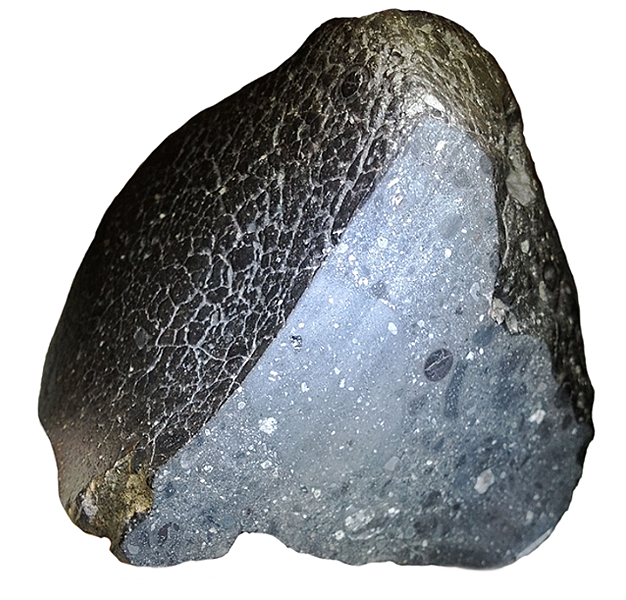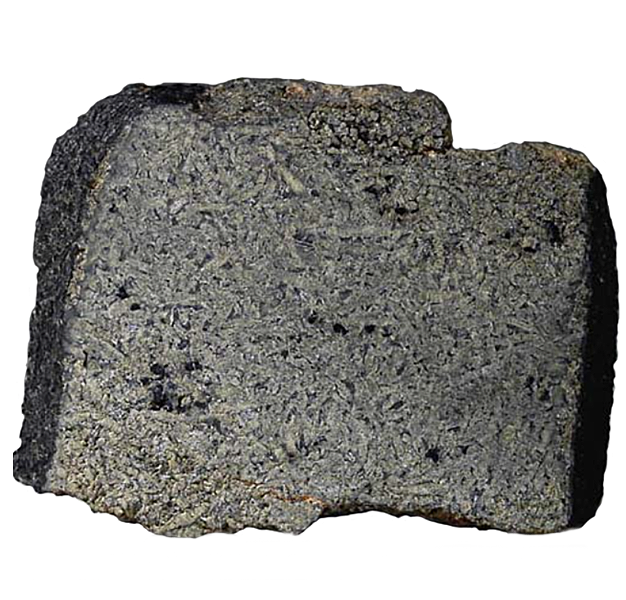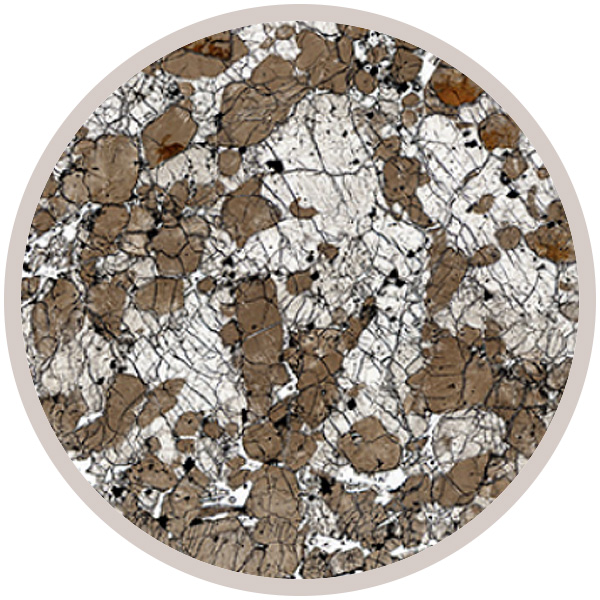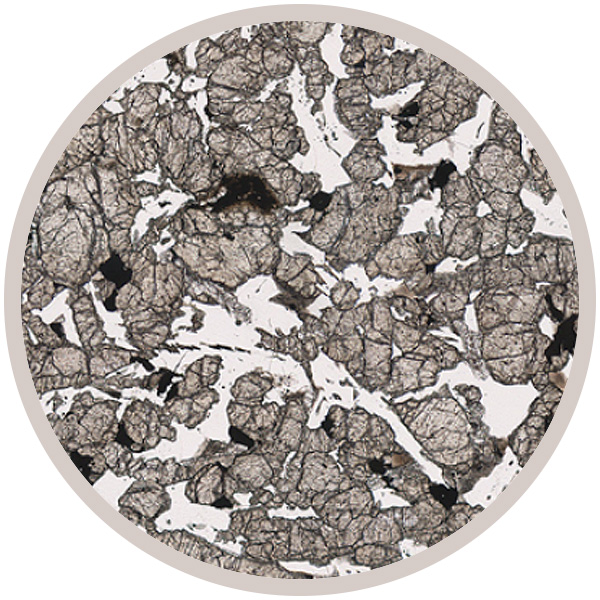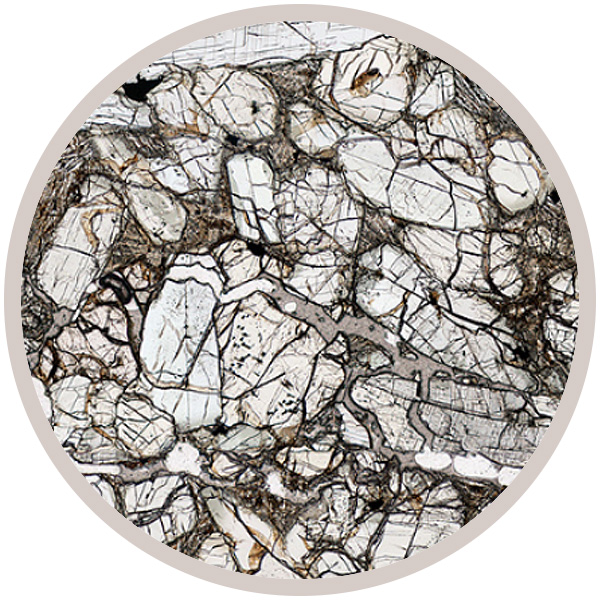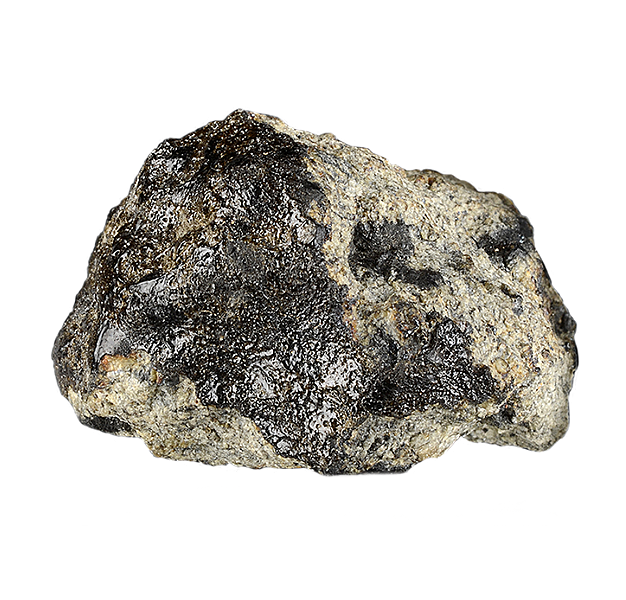
Fact sheet
The Tissint meteorite was seen to fall at Tissint, in southern Morocco on July 18th 2011. Several large pieces (over 1 kg) and many smaller fragments were found, starting in October 2011 (a total of over 12 kg). All had a nice black fusion crust, and appeared to be very fresh and unaltered. The Tissint meteorite is a picritic basalt from Mars that is about 600 m.y. old and took about 1.1 m.y. to get here (based on cosmic ray exposure). It is classified as a depleted olivine-phyric shergottite.
Tissint is an olivine rich basalt with two generations of olivine. Large, rounded olivine megacrysts appear to be more mafic than the rock. Olivine phenocrysts are also present in the matrix, but have less magnesium and more iron. Olivine has both melt inclusions and small euhedral chromite grains. The meteorite is highly shocked, as is evidenced by maskelynite replacing original plagioclase feldspar. Other high-pressure shock phases are also reported. Tissint also contains “pods” or pockets of impact-produced glass.
This description is based on the work of NASA scientist Charles Meyer - compiler of The Mars Meteorite Compendium.
Specimen is BM2012, M3 from the NHM - currently under investigation by the OU.
This collection of meteorites includes Shergottites, Nakhlites and Chassignites (or SNC meteorites) which originate from the surface of the planet Mars.
They carry unique signals of the surface of the planet that allows scientists to study the composition and age of Martian rocks. The collection includes a sample of the famous ALH84001 meteorite, evidence from which was used in 1996 to begin the debate of 'life on Mars?'.

